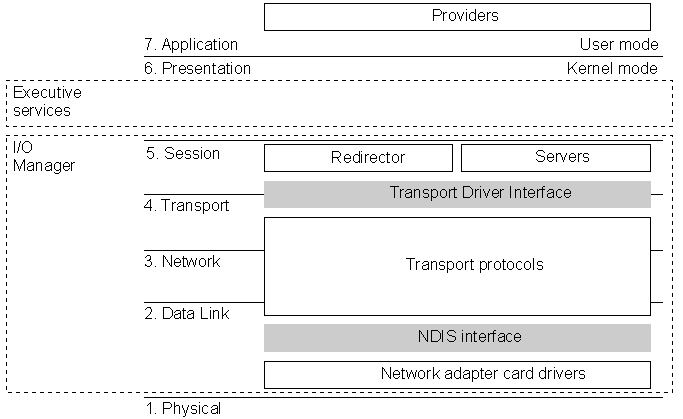
As with other architecture components of Windows NT, the networking architecture is built of layers. This helps provide expandability by allowing other functions and services to be added. Figure 1.5 shows all of the components that make up the Windows NT networking model.

Figure 1.5 Windows NT Networking Model
Each of the Windows NT networking layers performs these functions.
The Windows NT networking model begins at the MAC sublayer where network adapter card drivers reside. These drivers link Windows NT to the network via corresponding network adapter cards. Windows NT includes RAS to allow network access to computers for people who work at home or on the road. For more information, see "Remote Access for Windows NT Clients," later in this chapter.
The network model includes two important interfaces — the NDIS 3.0 Interface and the Transport Driver Interface (TDI). These interfaces isolate one layer from the next by allowing an adjacent component to be written to a single standard rather than many. For example, a network adapter card driver (below the NDIS interface) does not need to include blocks of code specifically written for each transport protocol it uses. Instead, the driver is written to the NDIS interface, which solicits services from the appropriate NDIS-conformant transport protocol(s). These interfaces are included in the Windows NT networking model to allow for portable, interchangeable modules.
Between the two interfaces are transport protocols, which act as data organizers for the network. A transport protocol defines how data should be presented to the next receiving layer and packages the data accordingly. It passes data to the network adapter card driver through the NDIS Interface and to the redirector through the TDI.
Above the TDI are redirectors, which "redirect" local requests for network resources to the network.
For interconnectivity with other vendors' networks, Windows NT allows multiple redirectors. For each redirector, the Windows NT computer must also have a corresponding provider DLL (supplied by the network vendor). A Multiple Provider Router determines the appropriate provider and then routes the application request via the provider to the corresponding redirector.
The rest of this chapter describes these Windows NT networking components in detail.